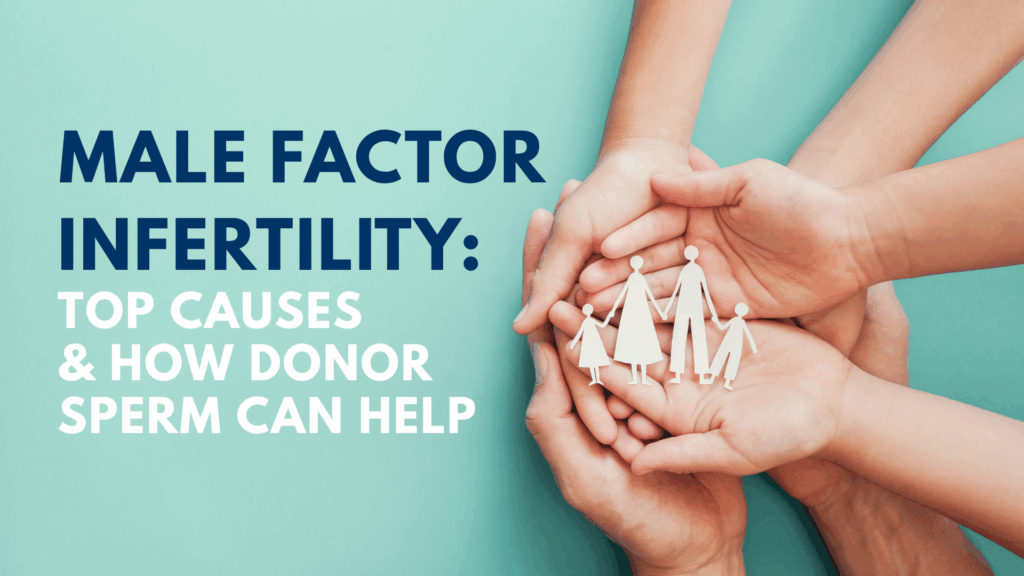Wouldn’t it Be Cool to have Twins?
Learn more about twin pregnancy basics, from our guest blogger, Christina Barnes, RN

If you’ve ever hoped to become pregnant with twins after struggles with infertility, you’re not alone. “One of the most common things I hear from women going through IVF is how great it would be to have twins,” says Suzanne Seitz, Genetic Counselor at Fairfax Cryobank. “They are putting so much effort into creating a pregnancy and are maybe getting to the end of their reproductive window. They see this as a matter of efficiency. How great would it be if they could just have two babies at once? Then their family would be complete.” It’s no secret that IVF and other fertility treatments are expensive, time consuming, and stressful. It seems to make sense that reducing the number of fertility treatments and consolidating two babies (or more) into one pregnancy would improve a family’s financial situation and quality of life. There is no guarantee that a woman will be able to conceive in the future after a successful IVF pregnancy, so why not aim for a twin pregnancy right now? Can the benefits of an intentional twin pregnancy outweigh the risks? According to the American Society for Reproductive Medicine (ASRM), the answer is no: the benefits of a twin pregnancy do not outweigh the risks.
Twin Pregnancy Basics
There are two different types of twins: dizygotic or “fraternal” twins, and monozygotic or “identical” twins. (Another way to remember the difference – “di” means two and “mono” means one.) Dizygotic twins occur when two separate eggs are fertilized and implant into the uterus, each with their own placenta. Monozygotic twins occur when one egg is fertilized and then divides into two embryos, and they may develop two separate placentas or share the same single placenta.
Twin births make up approximately 3 percent of all live births in the United States. Fraternal twins are more common than identical twins; fraternal twins account for about 70 percent of twin pregnancies.
What Increases Your Chances For a Twin Pregnancy?
- Use of Fertility Treatments: Undergoing fertility treatments significantly increases your chances of a twin pregnancy when compared to natural conception. Over 50 percent of women undergo double embryo transfer as part of IVF, with successful implantation of both embryos resulting in twins. Ovulation inducing drugs like Clomid will increase the likelihood that a woman will release more than one egg at a time, which can lead to fertilization of multiple eggs and a twin pregnancy. Over the last 40 years in the United States, the number of twin births has increased from 1 in every 53 infants to 1 in every 29 infants. This increase is due to the development and prevalence of fertility treatments; today, over one-third of all twin infants born in the United States are the result of fertility treatments.
- Maternal Age: As women age, the concentration of their follicle stimulating hormone (FSH) increases. A 35-year-old woman is two to three times more likely to naturally conceive fraternal twins than a 15-year-old woman. Aside from changes in FSH, older women are also more likely to use fertility treatments.
- Parity: Increased parity (the number of previous pregnancies carried to a viable gestational age) can lead to an increased likelihood of fraternal twins.
- Family History: In some cases, there is a genetic component to a woman’s chances of fraternal twin pregnancy. A woman with a family history of twin births has an increased risk of having twins.
- Maternal Weight and Height: Obese and tall women are more likely to have a fraternal twin pregnancy than underweight and short women.
Risks of a Twin Pregnancy:
Twin pregnancies have a higher risk of almost every potential complication of pregnancy. In order to monitor both the mother and the fetuses for these risks, women who are pregnant with twins will have more frequent prenatal appointments as compared to women pregnant with single babies.
- Preterm Birth: Twin pregnancies are at a significantly higher risk of preterm labor and delivery as compared to single fetus pregnancies. Preterm birth is when a baby is born before 37 weeks of pregnancy have been completed. In the United States, 59 percent of twins are born before 37 weeks gestation. Complications of preterm birth in the infant include:
- Hypothermia (low body temperature)
- Breathing abnormalities, respiratory diseases, and bleeding in the lungs
- Cardiovascular abnormalities
- Brain bleeds
- Glucose levels that are too low or too high
- Necrotizing enterocolitis, a life-threatening infection of the intestine
- Blindness
- Congenital Anomalies: Infants in twin pregnancies are at a significantly higher risk of birth defects, also known as congenital anomalies, as compared to women pregnant with single babies. Examples of congenital anomalies include heart defects, cleft lip and palate, defects of the intestine, and cystic kidney.
- Growth Restriction: Growth restriction is when a fetus does not grow to a normal weight while in the mother’s womb. These infants are born smaller than other babies of the same gestational age, which can put them at a higher risk for illness.
- Gestational Hypertension and Preeclampsia: Women who are pregnant with twins are twice as likely to develop hypertension (high blood pressure) and preeclampsia as compared to women pregnant with single babies.
- Gestational Diabetes: Women pregnant with twins are 1.5 times as likely to get gestational diabetes as compared to women pregnant with single babies.
One Healthy Baby at a Time
The American Society for Reproductive Medicine (ASRM) states that the goal of infertility treatment is one healthy baby at a time. The best way to decrease the chance of having a twin pregnancy through IVF is to transfer one embryo at a time. “Having a twin pregnancy results in complications not only for the mother but also for the babies if they’re born early or have birth defects. This is one reason IVF clinics are moving towards limiting the number of embryos transferred,” says Suzanne Seitz. The Centers for Disease Control and Prevention (CDC) also encourages couples undergoing fertility treatments to aim for singleton pregnancies in order to reduce the risk for maternal and infant diseases. If you have questions or want more information on twin pregnancies and fertility treatments, speak with your doctor. You can also check out the following resources with data from the CDC and ASRM:
CDC Having Healthy Babies One at a Time
ASRM Multiple Pregnancy – Patient Education Video
Looking for more posts like this? Don’t miss an update or blog, subscribe to our blog and monthly newsletter today.







